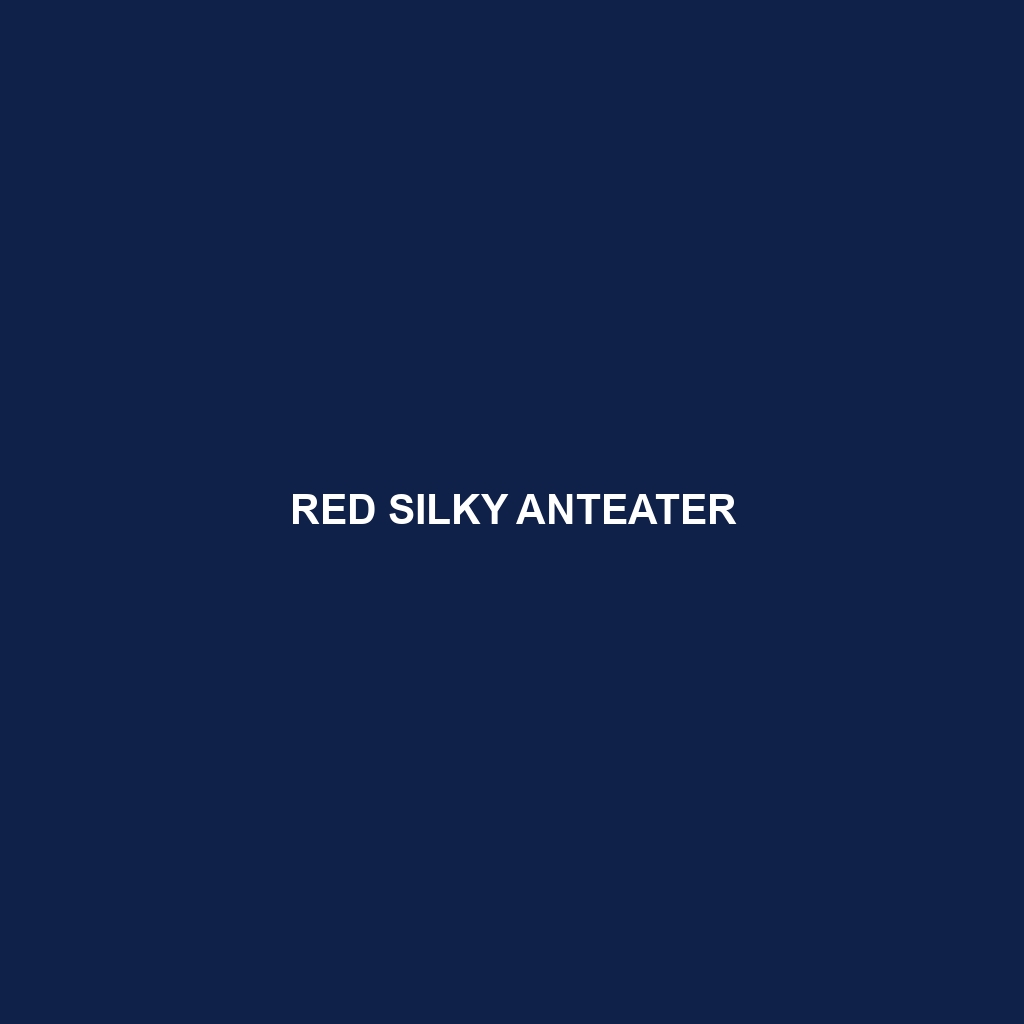Red Silky Anteater
The Red Silky Anteater (Cyclopes rufus) is a rare and captivating mammal, recognized for its petite size and vibrant fur. With its specialized diet of ants and termites, this nocturnal creature plays a crucial role in maintaining the ecological balance of its habitat. Despite its elusive nature, the Red Silky Anteater’s striking appearance and unique adaptations make it a subject of fascination for wildlife enthusiasts and researchers alike.
Physical Characteristics:
Size: The Red Silky Anteater is a diminutive species, typically measuring between 18 to 20 centimeters in length, excluding its tail, which can add an additional 20 to 25 centimeters.
Weight: They generally weigh between 150 to 200 grams, making them one of the smallest anteaters.
Coloration: True to its name, the Red Silky Anteater boasts a dense coat of silky, reddish-brown fur. This coloration helps it blend seamlessly with the foliage and bark of its arboreal habitat.
Special Features: This species has a prehensile tail, which is highly flexible and aids in climbing and grasping branches. Additionally, it possesses elongated fingers with sharp claws, ideal for tearing into termite mounds and ant nests.
Behaviors:
Social Interactions: Red Silky Anteaters are primarily solitary creatures. They come together only during the breeding season or when a mother is caring for her young. Communication is mostly through scent marking and occasional vocalizations.
Feeding Habits: Their diet consists almost exclusively of ants and termites, which they extract using their long, sticky tongues. They are known to consume hundreds of insects in a single night.
Ecological Roles: By feeding on ants and termites, the Red Silky Anteater helps control these insect populations, preventing overpopulation and the potential damage to their habitat.
Habitats:
Natural Habitat: The Red Silky Anteater inhabits tropical rainforests, particularly in regions with dense tree coverage and abundant insect populations. They are arboreal, spending most of their life in the canopy.
Geographical Range: They are predominantly found in the rainforests of Central and South America, with a notable presence in countries like Brazil, Guyana, and Venezuela.
Adaptations:
Prehensile Tail: Allows them to navigate and stabilize themselves among the trees.
Long Tongue: Enables them to reach deep into insect nests.
Camouflaged Fur: Their reddish fur blends with the forest canopy, offering protection from predators.
Conservation Status:
The Red Silky Anteater is currently classified as “Least Concern” by the IUCN. However, habitat destruction and deforestation pose significant threats to their population. Conservation efforts focus on habitat preservation and raising awareness about their ecological importance.
Fascinating Fun Facts:
The Red Silky Anteater is also known as the “Pygmy Anteater” due to its small size.
Unlike other anteater species, they do not have teeth. Instead, they rely on their powerful stomach muscles to grind up their insect prey.
They are exceptional climbers, capable of hanging upside down using just their tail.
Despite their solitary nature, they are known to share feeding trees with other anteaters, maintaining a peaceful coexistence.
By highlighting the Red Silky Anteater’s unique traits and ecological significance, we can foster a deeper appreciation and commitment to conserving this remarkable species.
